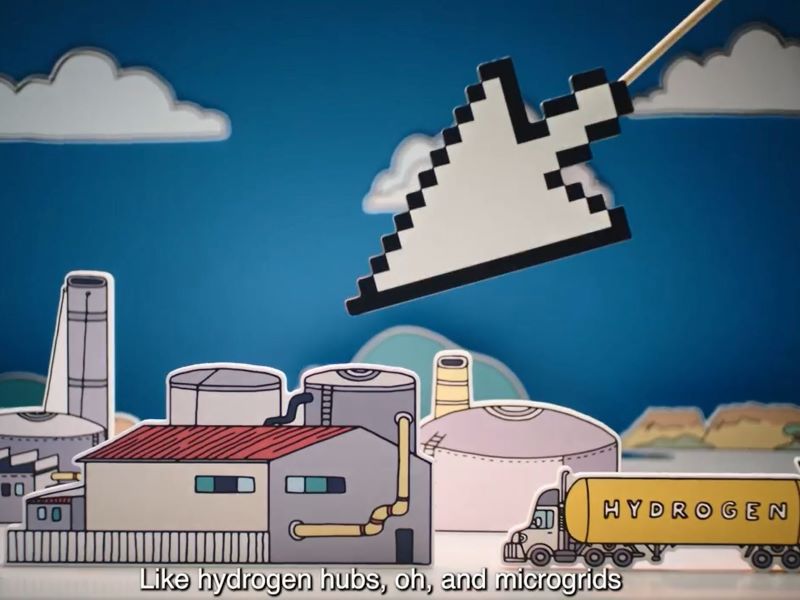The Industry department is spending five times as much on advertising the government’s net-zero emissions strategy as it did on experts to model the impact of the widely disputed plan.
On Monday, Industry department secretaries fronted Senate Estimates and were asked to explain the difference in a $31 million “Positive Energy” advertising campaign spruiking Australia’s emissions reduction effort and the $6 million it gave US consultancy McKinsey to help with net-zero modelling last year.
Labor senator Jenny McAllister described it as “a ratio of five to one: advertising and spin to policy”.
But the officials pointed to different markets requiring different levels of spending and that the McKinsey work had built on several years’ worth of existing emissions reduction strategy, describing both spends as “value for money”.

Last year, the Industry department gave McKinsey two contracts worth more than $6 million for support on the net-zero plan it was developing, bypassing CSIRO which had also bid for the work.
The first contract, listed only as “professional advice” when published in February, more than doubled in value over two extensions. It was later revealed the contract was to take the stretch goals from the Coalition’s technology roadmap and look at how to achieve them, and the impact of that across the economy.
The firm was then awarded a further $1.2 million to undertake a “bottom up” analysis on how abatement would occur across different sectors and compare that to the department’s own analysis.
Both pieces of work were key to the modelling underpinning Australia’s Long Term Emissions Reduction plan, published shortly before the global climate summit COP26.
The plan was widely criticised by climate experts and international media at the summit. The underpinning modelling was only released after COP26, and also received sharp criticism when it was revealed it is founded upon assumptions of technological advancements that haven’t yet happened, and is heavily reliant on offsets.
The first phase of the government’s Australia’s making positive energy campaign ran last year across a variety of mediums, costing nearly $13 million. It was extended without a review to a second phase costing $17.9 million.
At Senate Estimates on Monday, Labor’s Jenny McAllister asked officials why McKinsey’s modelling work had only begun less than a year before the COP26 summit, and why it paled in comparison to the $31 million advertising campaign, which runs into the election campaign and which does not mention the term ‘climate change’.
“So it was $6 million for McKinsey to understand the economic impacts of the government’s policy and $30 million for advertising. That’s the comparison, isn’t it…a ratio of five to one: advertising and spin to policy?” Senator McAllister asked officials.
Industry department officials confirmed the figures are correct but rejected the comparison because the spending was for distinctly different markets.
“I think it’s well known that expenditure required, particularly on TV and radio advertising, is significant,” Industry department secretary David Fredericks said.
“At the end of the day, for us as the Public Service, our job is to make value for money judgements in two quite different markets. I’m very comfortable that we’ve made very good value for money judgements in each of those two markets.”
Deputy secretary Jo Evans also pointed to the McKinsey modelling being for a “very specific piece of work” building on previous emissions reduction programs.
“[The McKinsey work] was translating the stretch goals of the original Low Emissions Technology Statement that was done the year before into time lines and into a way that we could actually model a time frame for that,” she said.
“But a lot of the thinking about how you approach technology and what’s the best way to do that had already been occurring before that time.”
Do you know more? Contact James Riley via Email.

